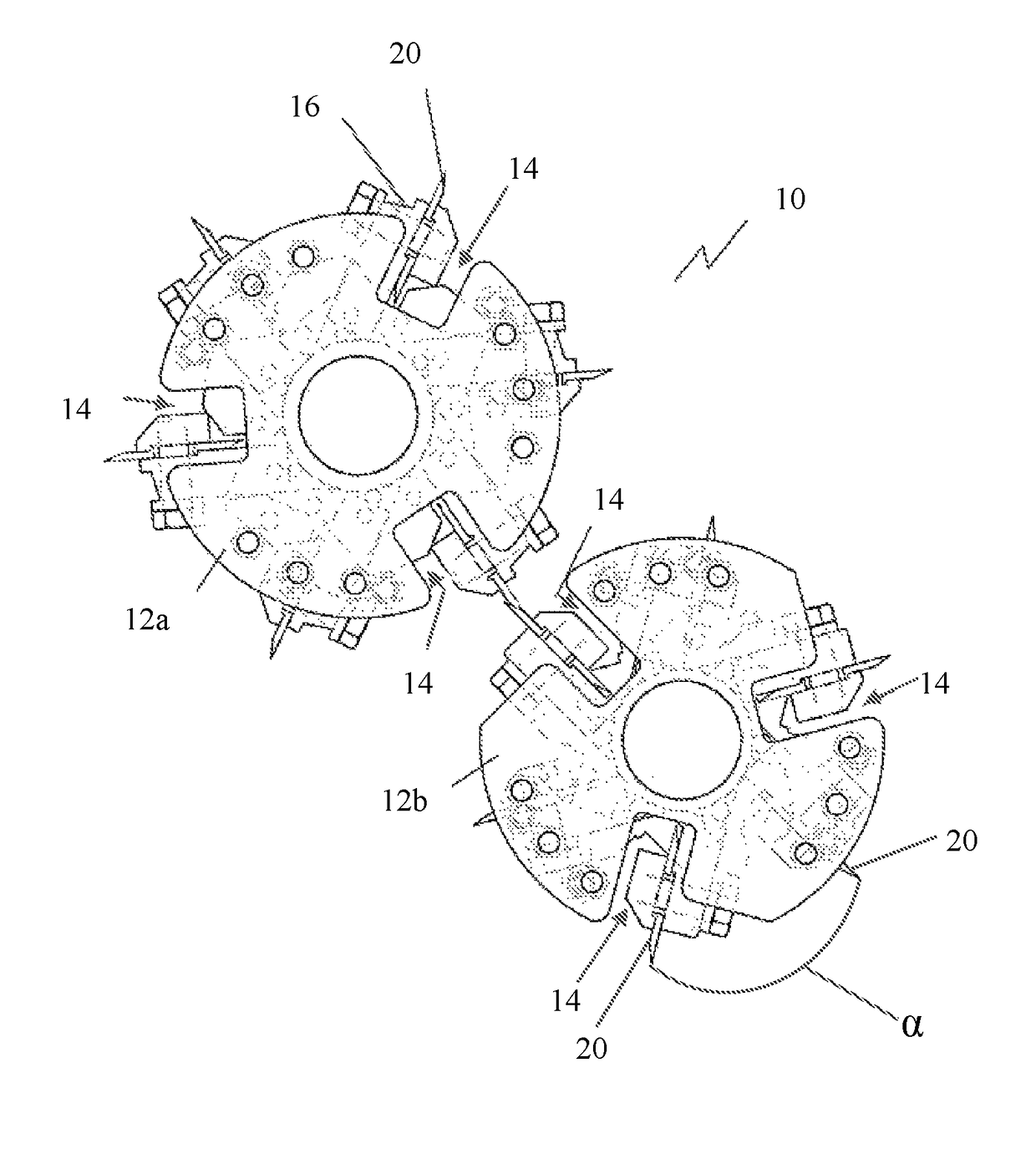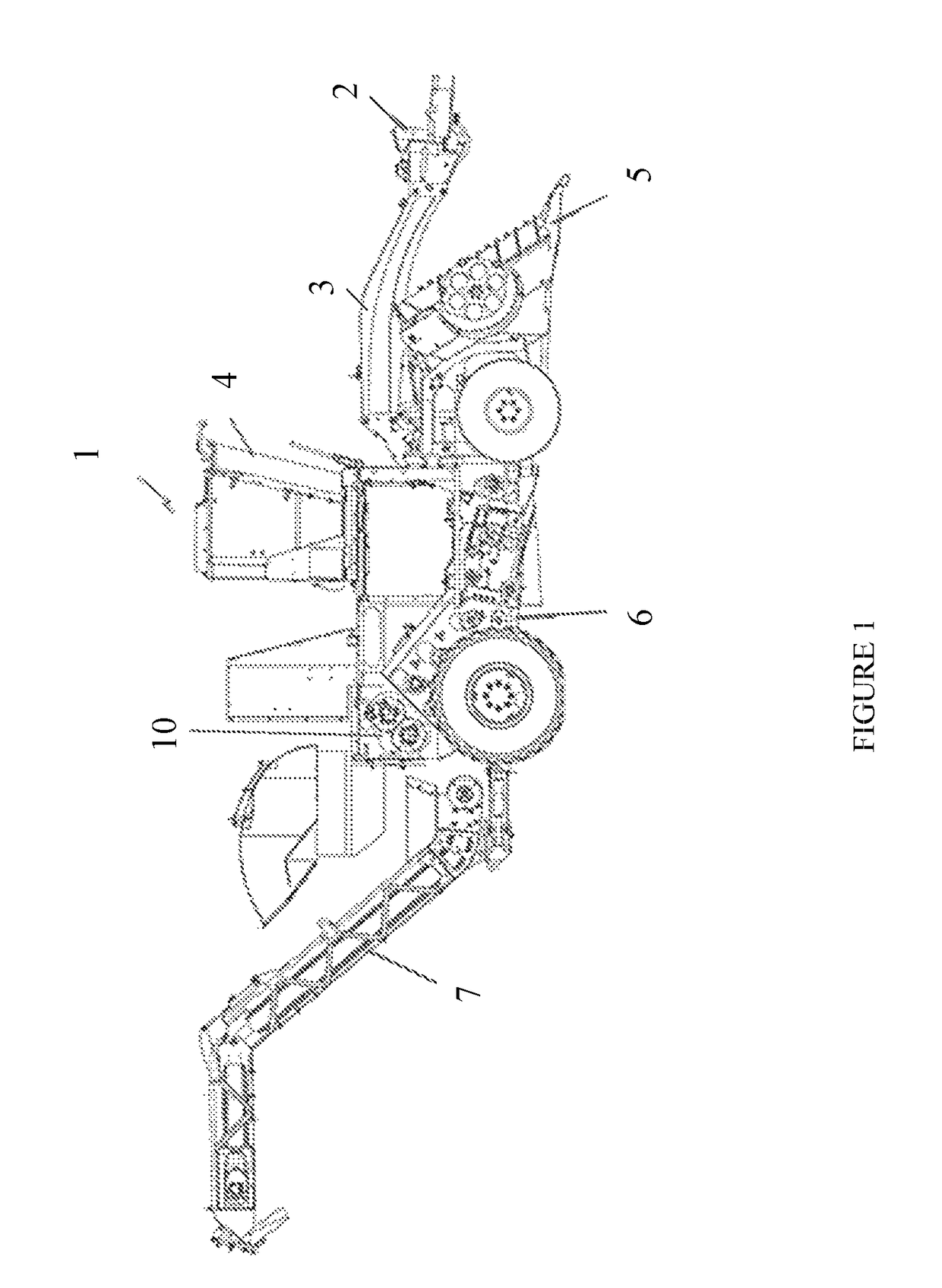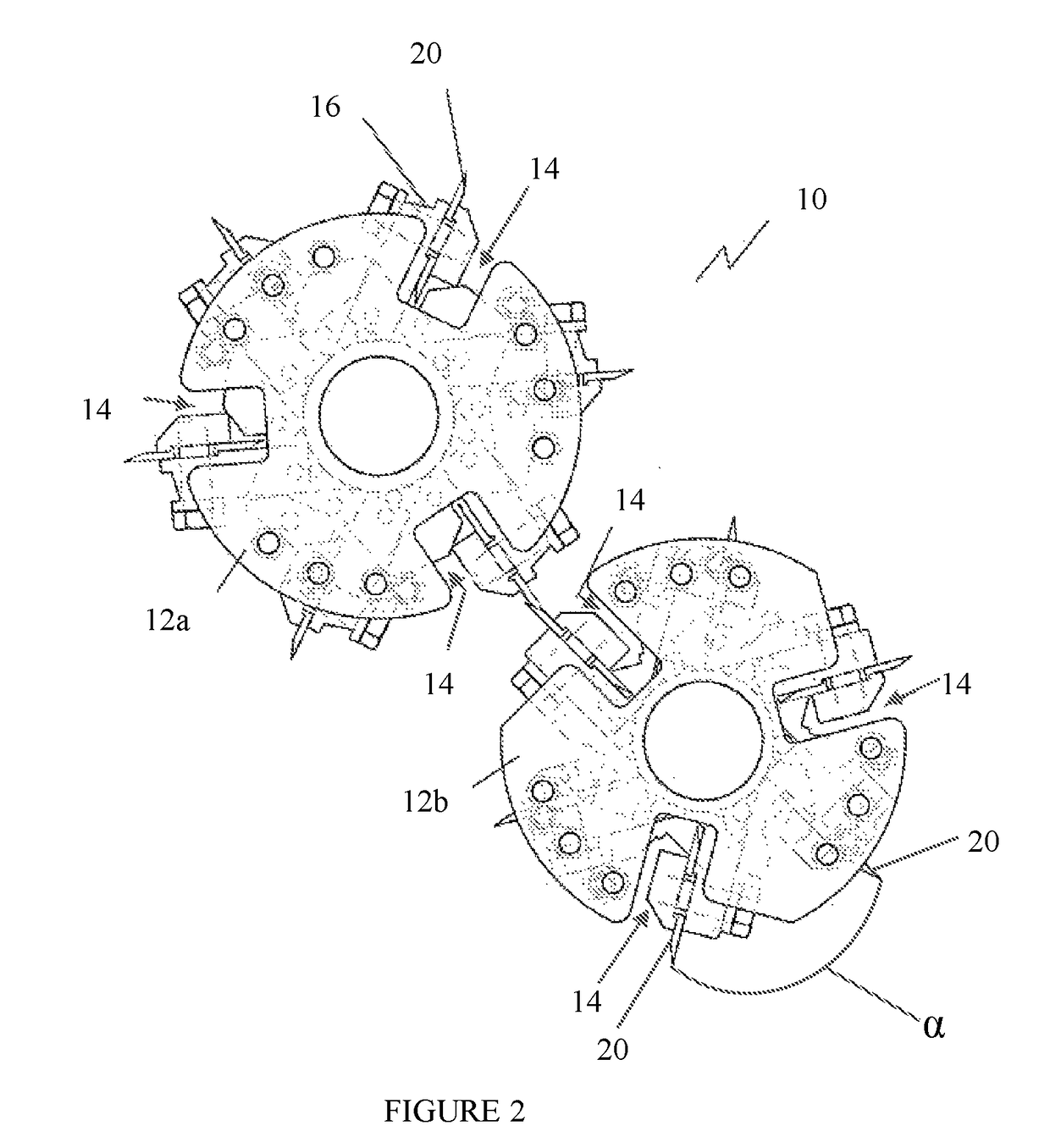Chopper mechanism for stalked crop
a stalking crop and chopper technology, applied in the field of stalking crop, can solve the problems of reducing the effective use of the sharpened edge of the blade, requiring the replacement of the entire blade, and not effectively using the entire sharpened edge, so as to reduce the effective use of the sharpened edge, facilitate chopping, and increase the overall operating cost of the harvester
- Summary
- Abstract
- Description
- Claims
- Application Information
AI Technical Summary
Benefits of technology
Problems solved by technology
Method used
Image
Examples
Embodiment Construction
[0028]Several stalk-like crops, such as sugarcane, is required to be cut into billets of a predetermined length, post harvesting. The harvesting of sugarcane has been mechanized by use of sugarcane harvesters. Sugarcane harvesters, besides enabling harvesting of sugarcane from fields, also facilitate in chopping the sugarcane stalks into billets of predetermined length by utilizing a chopper mechanism. Conventional chopper mechanisms include a pair of drums on which a plurality of blades are circumferentially spaced apart on each of the drums. The presently available blades used in the chopper mechanism have a length spanning the length of the drum with a single edge which is sharpened to facilitate chopping of sugarcane stalks into billets. During the chopping of the billets, the entire sharpened edge is not effectively utilized in the chopping operation, however in case of wearing out or damage to a portion of the blade, entire blade is required to be replaced. This reduces the ef...
PUM
 Login to View More
Login to View More Abstract
Description
Claims
Application Information
 Login to View More
Login to View More - R&D
- Intellectual Property
- Life Sciences
- Materials
- Tech Scout
- Unparalleled Data Quality
- Higher Quality Content
- 60% Fewer Hallucinations
Browse by: Latest US Patents, China's latest patents, Technical Efficacy Thesaurus, Application Domain, Technology Topic, Popular Technical Reports.
© 2025 PatSnap. All rights reserved.Legal|Privacy policy|Modern Slavery Act Transparency Statement|Sitemap|About US| Contact US: help@patsnap.com



